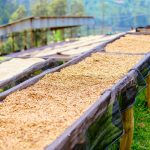Forget the latte art and the artisanal roasts for a minute. Let’s talk about the real grit—the raw, unfiltered economics of coffee. This isn’t some fluffy, corporate PR piece; this is the brutal honesty you’d expect from a late-night conversation at a dive bar with a bunch of caffeine-fueled metalheads.
The Global Grind: A Supply Chain of Unequal Power
The journey of your morning cup is a wild ride, starting in the highlands of countries like Ethiopia, Colombia, and Vietnam. Millions of smallholder farmers, many working on land passed down for generations, cultivate the beans. Their livelihoods are directly tied to global commodity prices—a volatile market that can fluctuate wildly, leaving farmers vulnerable to devastating price crashes. Think of it as a metal band constantly touring—one bad gig, and the whole thing collapses. This inequality is a fundamental issue in the coffee economy. It’s a system ripe for disruption, and some efforts are underway to level the playing field.
Fair Trade: A Necessary, But Imperfect, Path
Fair Trade certification is one attempt to address these inequalities. It aims to guarantee farmers a minimum price for their beans, providing a safety net against market fluctuations. While it’s a step in the right direction, it’s not a silver bullet. The reality is far more nuanced. The success of Fair Trade is often debated, with some critics arguing that it doesn’t go far enough in addressing systemic issues, particularly the lack of economic opportunities for farmers in the global market. Fairtrade International offers more details on the initiative’s goals and impact.
The truth is, navigating the global coffee market is a challenging dance. Farmers need a stable income, buyers need consistent supply and quality, and consumers need their caffeine fix. It’s a complex equation, often involving numerous intermediaries along the supply chain – from collectors and exporters to importers and roasters.
Beyond the Bean: The Roasting Revolution
Once the beans reach roasters, another layer of economic complexity emerges. The specialty coffee market, with its focus on single-origin beans and meticulous roasting techniques, adds a premium to the price, but the benefits don’t always trickle down to the farmers. This is where transparency and direct trade relationships can become powerful levers for change.
Many roasters are working to build more equitable partnerships with producers, ensuring farmers receive a fair share of the profits. They may pay above-market prices, offer direct financing, and invest in community development projects. It’s a battle for sustainability, ensuring not only the coffee supply but also the health of coffee-growing communities.
The Economics of Your Cup: A Deeper Dive
Let’s be clear: the price you pay for a cup of coffee rarely reflects the true cost of production. Most of the profits are concentrated at the higher ends of the supply chain, not where the beans are grown. But what if we shifted the balance of power? What if consumers were more conscious of the economic realities behind their morning fix?
This isn’t just about ethical sourcing; it’s about understanding the vast economic machine that fuels our daily ritual. It’s about recognizing the human element within each cup, from the farmer’s hands to your mug. Speaking of mugs, if you’re looking for a mug that truly appreciates the dark side of things, check out these crypto coffee mugs—they’re about as rebellious as it gets.
The Future of Coffee: A Call for Change
The future of coffee depends on finding a more sustainable and equitable model—one that prioritizes the well-being of farmers and communities while ensuring a high-quality product for consumers. It requires transparency, collaboration, and a willingness to challenge the status quo. It’s a long road ahead, but with consumers who are increasingly mindful of their coffee’s journey and origins, and roasters who are committed to ethical sourcing, there’s hope for a more balanced and sustainable coffee economy. The potential is enormous. We just need the collective will to make it happen.
This isn’t just about economics; it’s about building a more just and sustainable world, one cup at a time. That’s something worth raising a mug to.
Understanding these complex dynamics is crucial. To get a complete picture of the global coffee trade, refer to this report from the World Bank.


